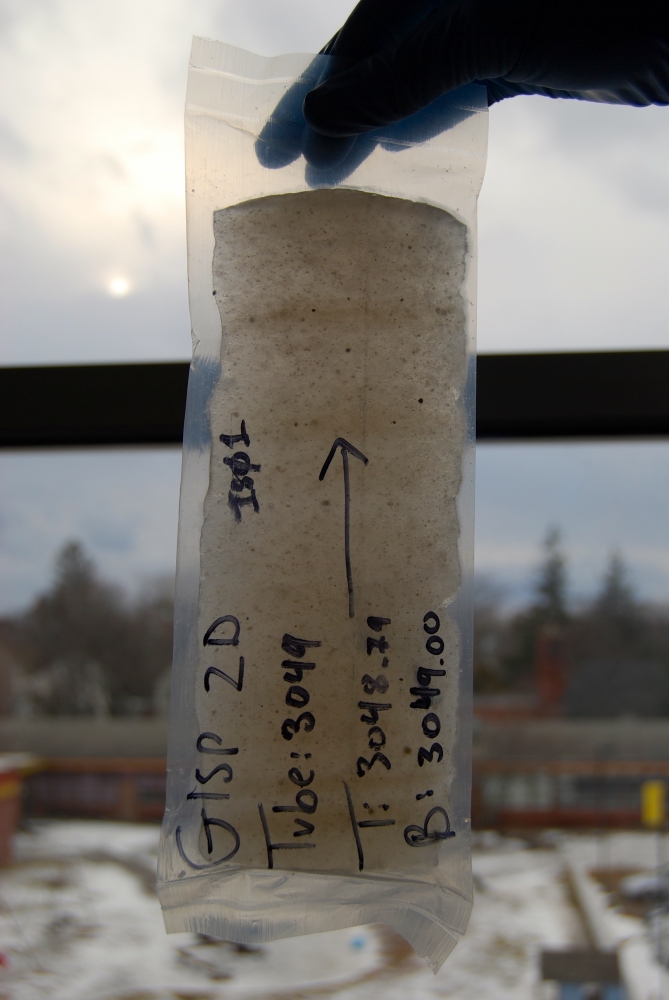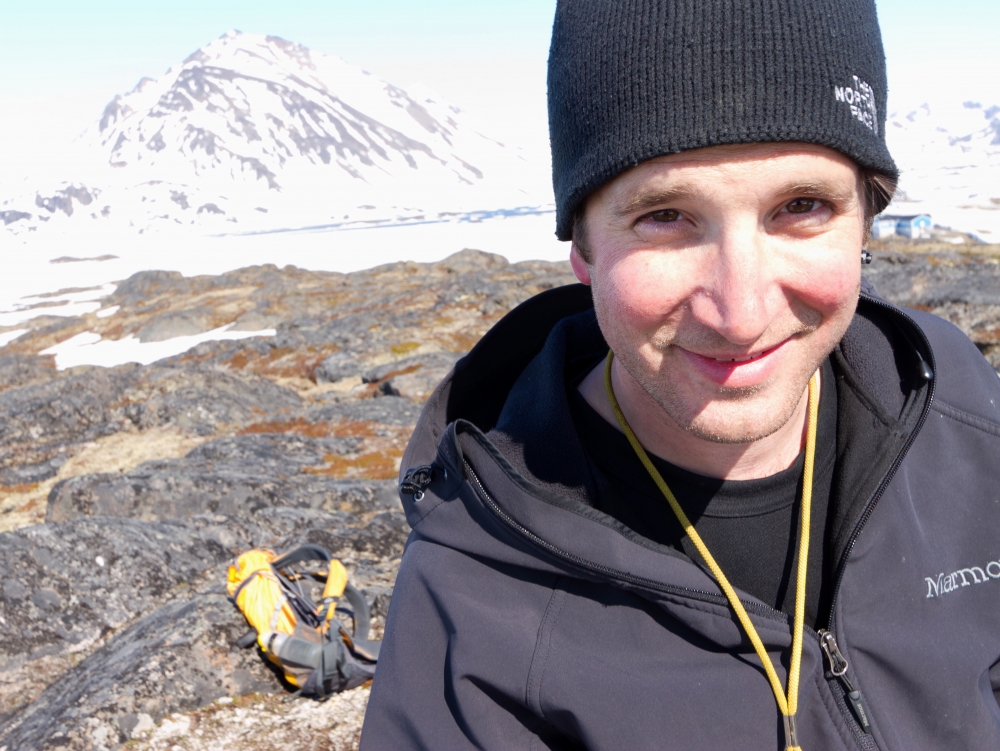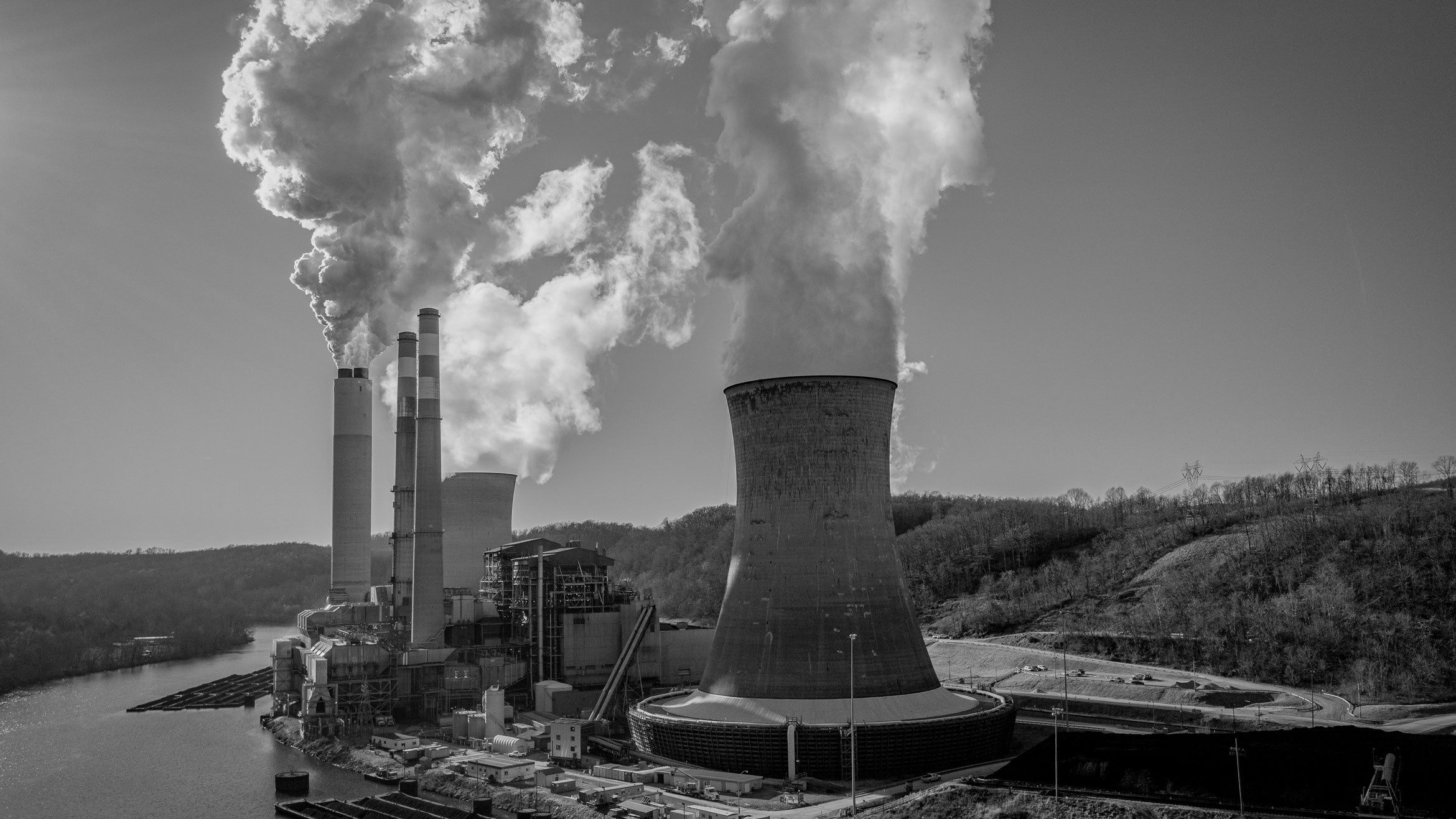There’s Something Ancient in the Icebox
Glaciers are commonly thought to work like belt sanders. As they move over land, they scrape off everything — vegetation, soil and even the top layer of bedrock. So scientists were surprised to discover an ancient tundra landscape preserved two miles below the Greenland Ice Sheet. Their findings appear in today’s issue of the journal Science.
The team found organic soil that has been frozen to the bottom of the ice sheet for 2.7 million years. “The ancient soil under the Greenland Ice Sheet helps to unravel an important mystery surrounding climate change,” said co-author Dylan Rood, a researcher at UC Santa Barbara’s Earth Research Institute. “How did big ice sheets melt and grow in response to changes in temperature?”
According to lead author Paul Bierman, a geologist at the University of Vermont, the study provides strong evidence that the Greenland Ice Sheet has persisted much longer than previously known, enduring through many past periods of global warming.
Antique Landscapes
Greenland is a place of great interest to scientists and policymakers because the future stability of its huge ice sheet — the size of Alaska, and second only to Antarctica — will have a fundamental influence on how fast and high global sea levels rise from human-caused climate change.
The researchers’ new discovery indicates that even during the warmest periods since the ice sheet formed, the center of Greenland remained stable. “It’s likely that it did not fully melt at any time,” Bierman said. He noted that this allowed a tundra landscape to be locked away, unmodified, under ice through millions of years of global warming and cooling.
Until now, science has always perceived glaciers as very powerful agents of erosion that can effectively strip a landscape clean. However, this new work demonstrates that the Greenland Ice Sheet is not acting in that way. In fact, the findings show that at its center, the ice sheet has created very little erosion since its inception almost 3 million years ago. Rather than scraping and sculpting the landscape, the ice sheet has been frozen to the ground.
Cosmic Signal
The scientists tested 17 “dirty ice” samples from the bottommost 40 feet of the 10,019-foot GISP2 ice core extracted from Summit, Greenland, in 1993. From this sediment, the team extracted a rare isotope called beryllium-10. Formed by cosmic rays, it falls from the sky and sticks to rock and soil. The longer soil is exposed at the Earth’s surface, the more beryllium-10 it accumulates. Measuring how much is in soil or a rock gives geologists a kind of exposure clock.
The researchers expected the sediment at the bottom of the ice core to contain only soil eroded from glacier-scoured bedrock and to find increasingly smaller amounts of the beryllium since the landscape under the ice sheet would have not been exposed to the sky. However, when the silt was measured in a particle accelerator at Lawrence Livermore National Laboratory in Northern California, it had very high concentrations of the isotope.
Supported by funding from the National Science Foundation, the new research shows that the soil had been stable and exposed at the surface for somewhere between 200,000 and 1 million years before being covered by ice. To help qualify these unexpected findings, the team also measured nitrogen and carbon that could have been left by plant material in the core sample.
The measurable amounts of organic material found in the silty ice indicate that soil must have been present under the ice, Rood explained, and its composition suggests that the pre-glacial landscape may have been a partially forested tundra. “Greenland really was green! However, it was millions of years ago,” Rood said. “Greenland looked like the green Alaskan tundra, before it was covered by the second-largest body of ice on Earth.”
To confirm their findings about this ancient landscape, the researchers also measured beryllium levels in a modern permafrost tundra soil on the North Slope of Alaska. “The values were very similar,” said Bierman, “which made us more confident that what we found under Greenland was tundra soil.”
Future Tense
Many geologists are seeking a long-term view of the history of the Greenland Ice Sheet — including how it moves and has shaped the landscape beneath it — with an eye toward better understanding its future behavior. Its 656,000 square miles of ice contain enough water, if fully melted, to raise global sea levels 23 feet.
According to Bierman, global warming could affect the 2.7-million-year-old soil sitting under Greenland. “The ice sheet on top of the soil has not disappeared in the time in which humans became a species,” he said. “But if we keep on our current trajectory, the ice sheet will not survive. And once you clear it off, it’s really hard to put it back on.”






